 |
||||||
|
|
 |
||||||
|
|
|
Laura Brophy of Green Point Consulting at work |
Green Point Consulting Project sites |
|||||||||||||||||||
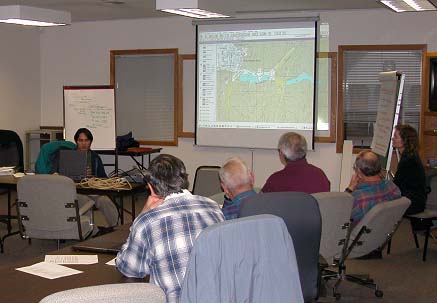 |
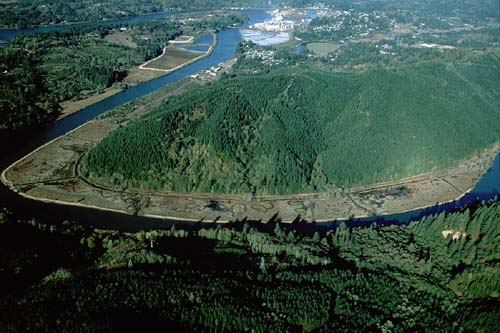 |
|||||||||||||||||||
Photograph
© David S. Pitkin |
||||||||||||||||||||
|
Photo: Fred Seavey
|
||||||||||||||||||||
|
Above, Laura Brophy (at right) of Green Point Consulting and Khemarith So (left) of USFWS meet with members of the Umpqua Watershed Council Technical Team. GPC was Principal Investigator and contractor with USFWS for a prioritization of tidal wetland sites in the Umpqua River estuary of Oregon. Community involvement is key to Green Point Consulting results, and GPC actively seeks feedback and input from local communities to ensure products are accurate and highly usable. |
Shown
above is a major new tidal marsh restoration site on the Yaquina River
near Toledo, Oregon. The restoration work was designed and supervised
by Green Point Consulting, under contract to the MidCoast Watersheds Council.
This site constitutes the first major tidal marsh restoration in the Yaquina
River estuary; the Yaquina is one of Oregon's major salmon producing rivers.
The site is directly opposite Mill Creek, a FEMAT-designated key watershed
which supports runs of coho, chinook, steelhead and chum. The site is
owned by The Wetlands Conservancy; restoration was funded by the Oregon
Watershed Enhancement Board, and many other cooperators. |
|||||||||||||||||||
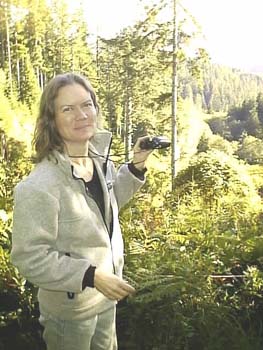 |
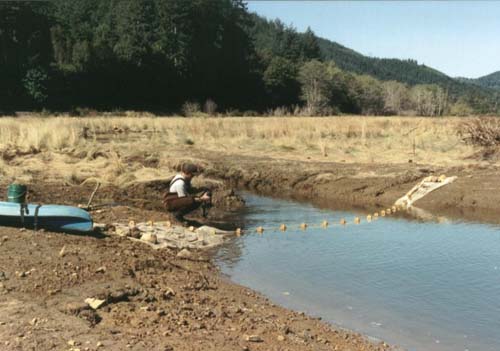 |
|||||||||||||||||||
|
Photo:
Ralph Garono |
Photo: Laura
Brophy |
|||||||||||||||||||
|
In preparation for assessing watersheds for the MidCoast Watersheds Sixth Field Watershed Assessment, we conducted reconnaissance of the upper Schooner Creek watershed (tributary to the Siletz River). Above, Laura enjoys unusually lovely weather for field work on the OR coast! |
Green
Point Consulting works with many partners to provide multifaceted analysis
of wetland site functions. Above, Tony Stein of ODFW and Laura Brophy of
GPC have set up a seine to sample for juvenile salmon use of created tidal
channels at the Simpson Resource Company tidal marsh restoration site shown
at the top of this page. |
|||||||||||||||||||
 |
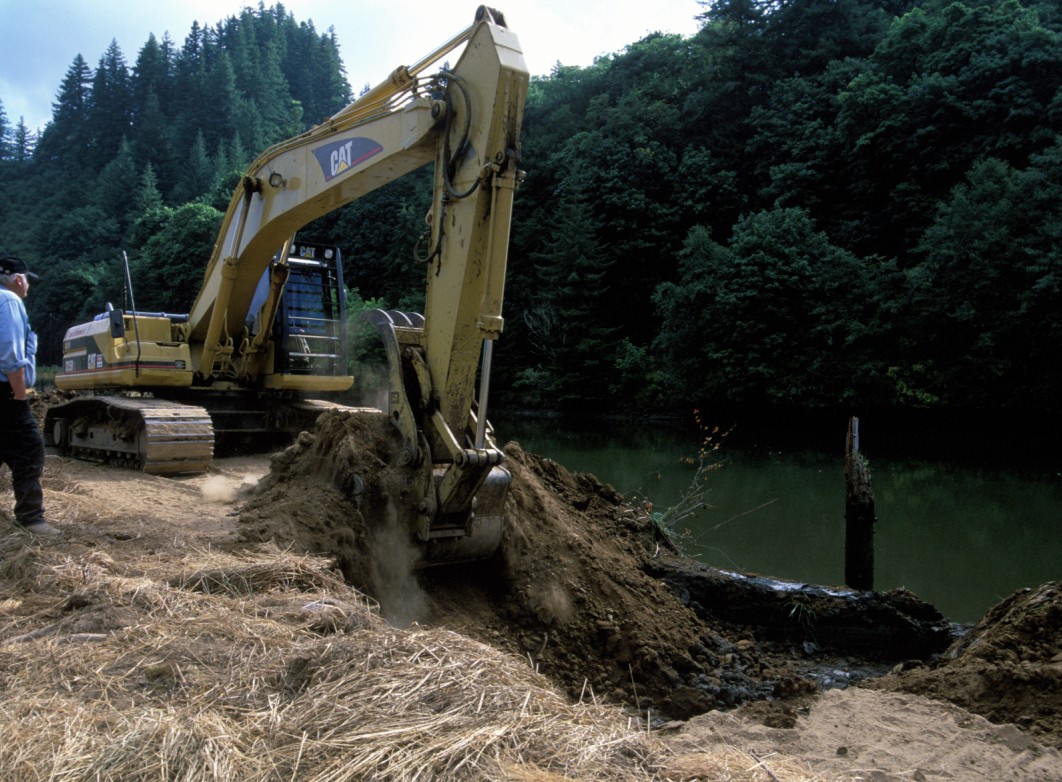 |
|||||||||||||||||||
Photograph
© David S. Pitkin |
||||||||||||||||||||
Photo:
Janet Lamberson |
||||||||||||||||||||
| Laura
frequently teaches classes on wetlands and plant identification. Above,
Laura shows the distinctive characteristics of sandspurry (Spergularia
spp.) to class participants from the Environmental Protection Agency, Coastal
Ecology Group (Newport, Oregon). |
Dike breaching at the Simpson Resource Company tidal marsh restoration site Yaquina River, Oregon. Site work specifications such as dike breach contours were provided by Green Point Consulting. Above, Jim Horner of Road and Driveway Inc. watches while Jay Lemmon excavates to specifications using the Cat 325B. | |||||||||||||||||||
 |
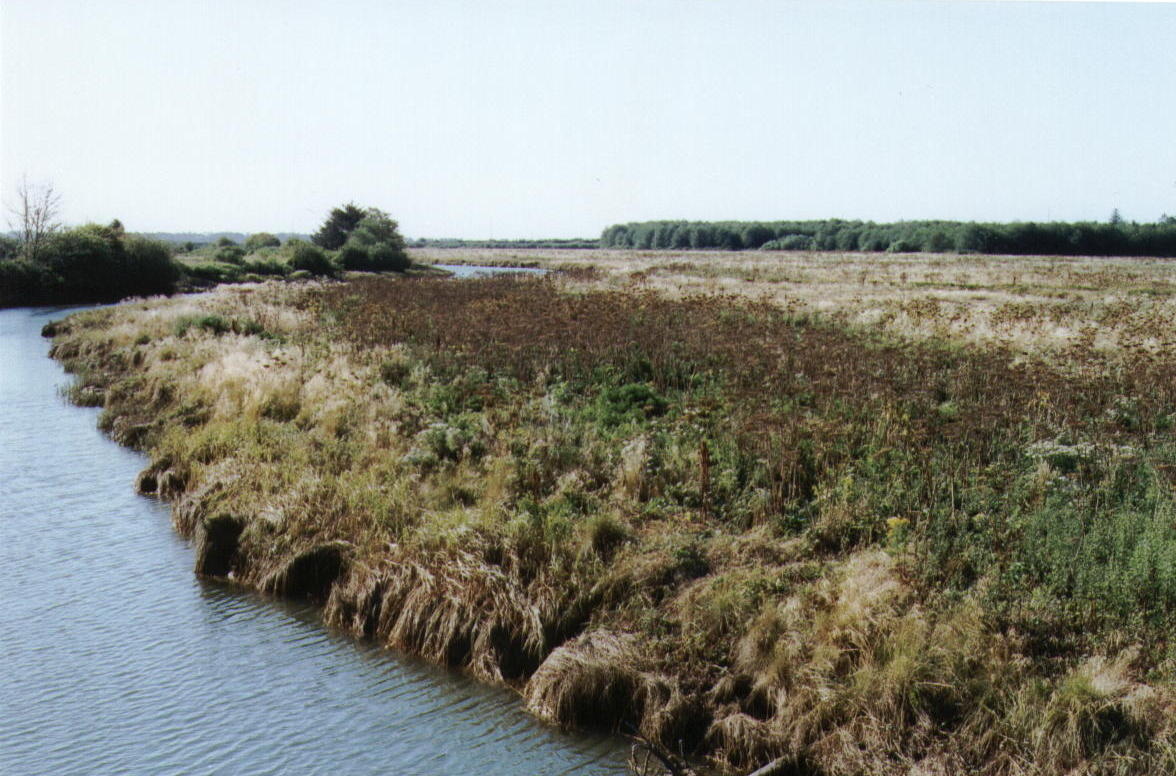 |
|||||||||||||||||||
Photo:
Laura Brophy |
||||||||||||||||||||
Photograph
© David S. Pitkin |
||||||||||||||||||||
|
Above, Laura maps plant communities in the Siletz River estuary (Oregon). The tall plant in the foreground is seawatch angelica (Angelica lucida). |
The photo above shows a natural levee created by deposition of coarse sediment during flood flows, Millport Slough, Siletz River Estuary. Green Point Consulting provided detailed plant community mapping and monitoring in the Siletz River estuary for the Confederated Tribes of Siletz Indians and USFWS. |
|||||||||||||||||||
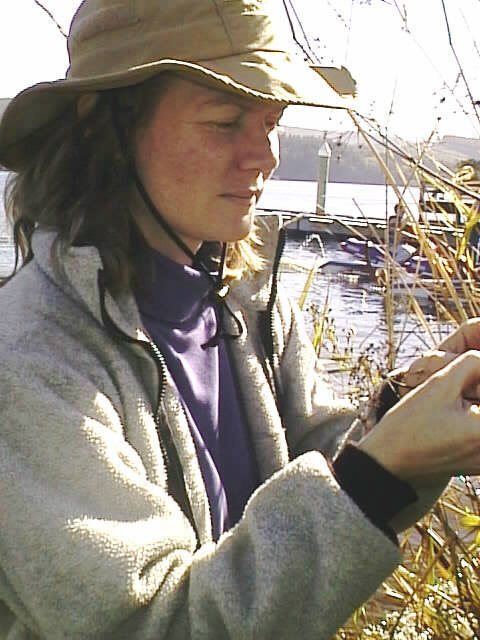 |
 |
|||||||||||||||||||
Photo:
Ralph Garono |
Photo: Laura
Brophy |
|||||||||||||||||||
| Accurate
identification of grasses,sedges and rushes requires close examination.
Above, Laura examines bulrush flowers at Devil's Lake, Lincoln County, Oregon. |
Tidal
swamp -- characterized by tidal channels flowing through a forested or
shrub wetland -- was once prevalent throughout upper estuaries of the
Pacific Northwest. But, this wetland type is now almost completely missing
from our coastal landscape; most tidal swamps were long ago converted
to agricultural uses. The multi-layered vegetation, deep tidal channels
and abundant woody debris of tidal swamps once provided excellent foraging
habitat for juvenile salmon. Above, Sitka spruce, Pacific crabapple and
black twinberry shelter a tidal channel in a small remnant of tidal swamp
in the upper Yaquina River estuary. Green Point Consulting is conducting
several projects to advance the science of tidal swamp restoration. |
|||||||||||||||||||
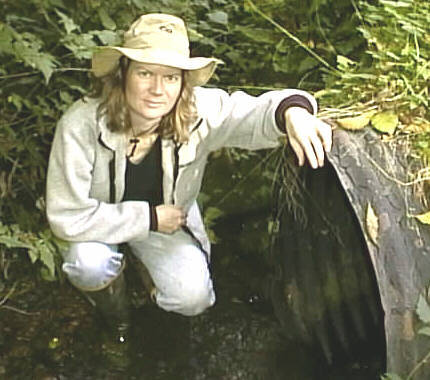 |
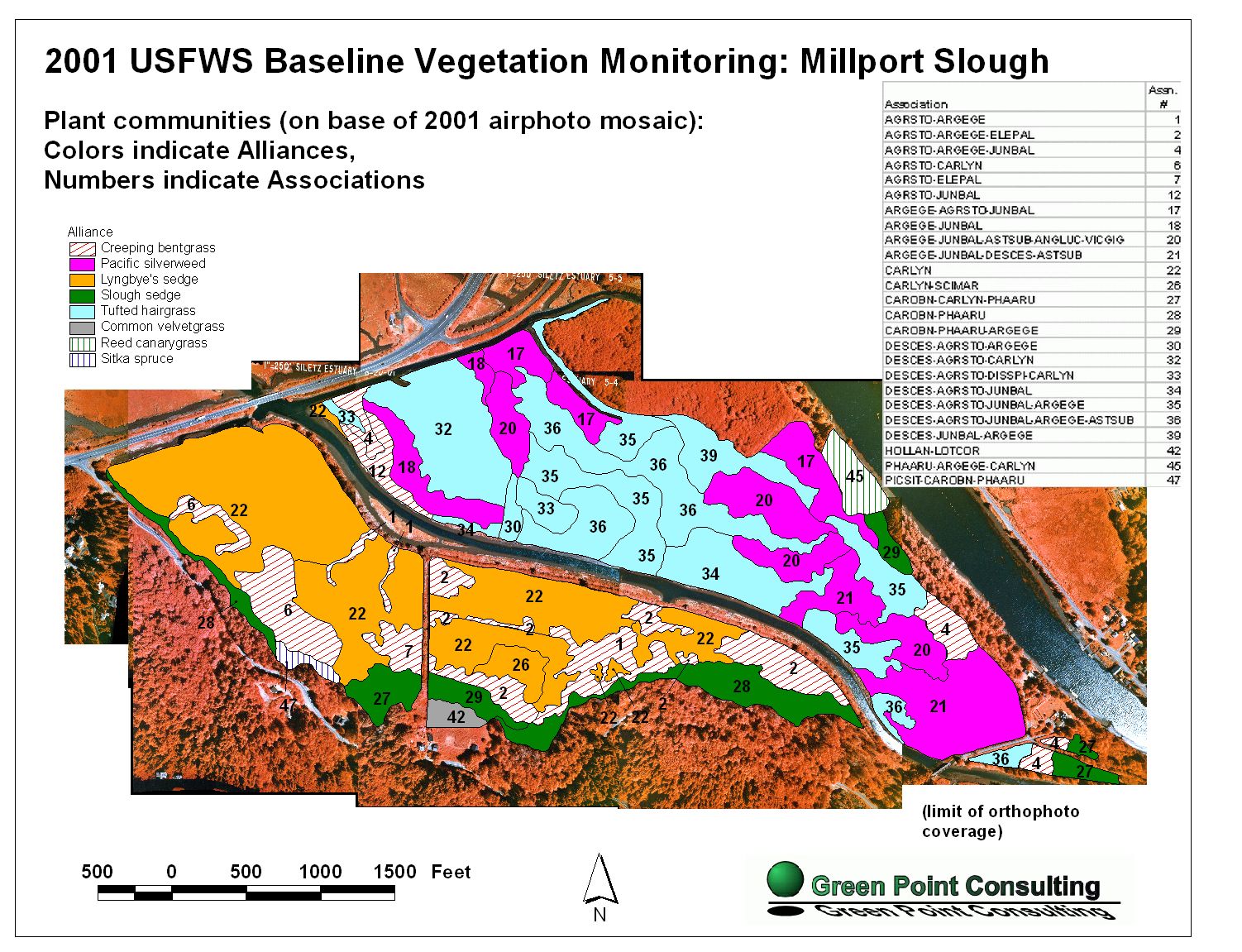 |
|||||||||||||||||||
Photo:
Ralph Garono |
(Click on image repeatedly to obtain full-size version) | |||||||||||||||||||
| Watershed
assessment includes analysis of culverts, which affect anadromous fish passage
and hydrology. Above, Laura examines a culvert in the Schooner Creek watershed
of the Siletz Basin, Oregon. |
Green
Point Consulting mapped and monitored plant communities for USFWS at tidal
marsh restoration and reference sites in the Siletz Estuary. In the map
above, colors indicate major plant community types (alliances), while
the numbered codes indicate plant associations, as shown on the table
at the upper right. |
|||||||||||||||||||
|
|
||||||
| Contact Green Point Consulting at (541) 752-7671, or e-mail Laura"at"GreenPointConsulting.com (when typing email address, replace "at" with "@") | ||||||
|
Copyright Green
Point Consulting 2006. All rights reserved.
|